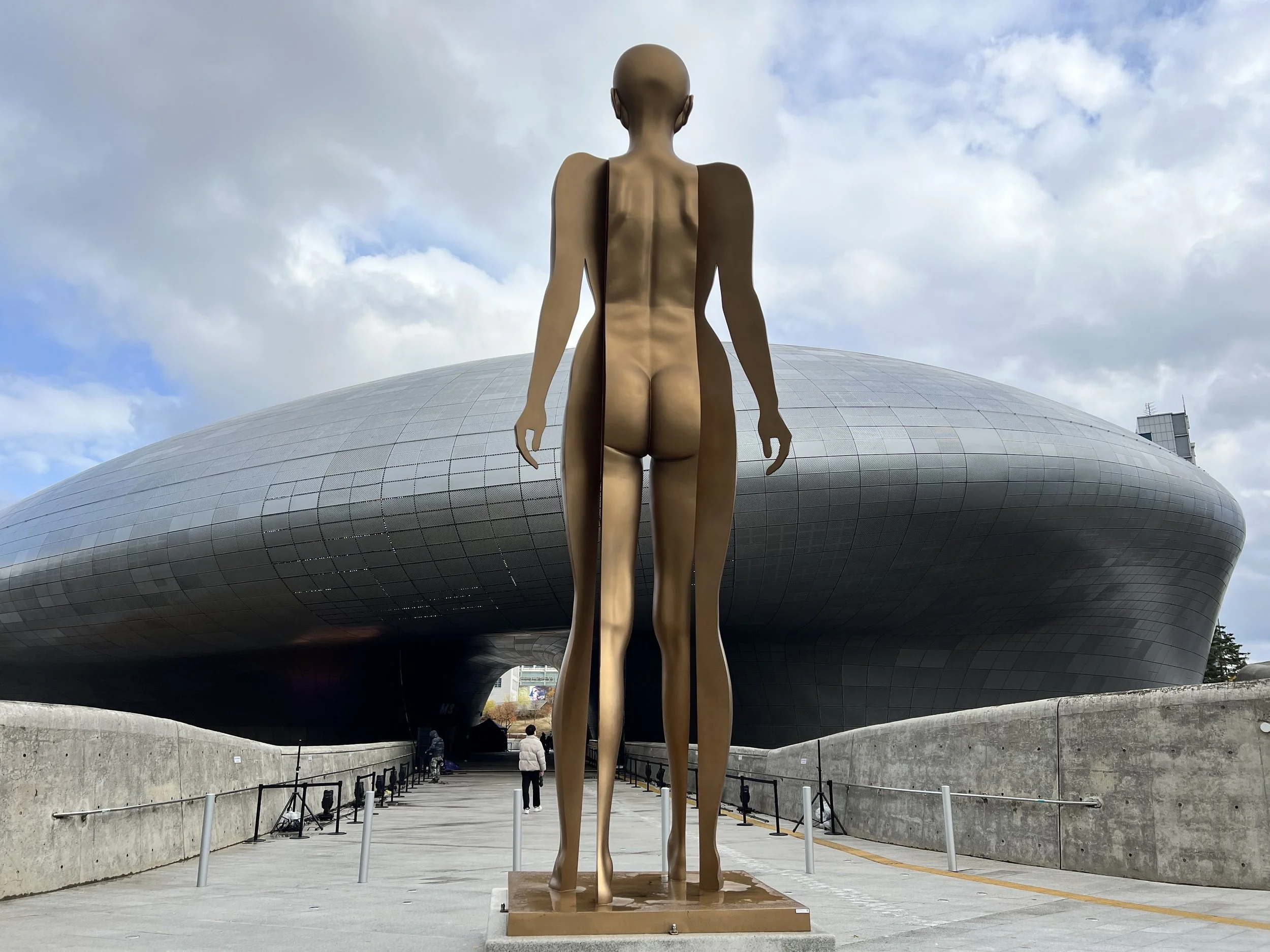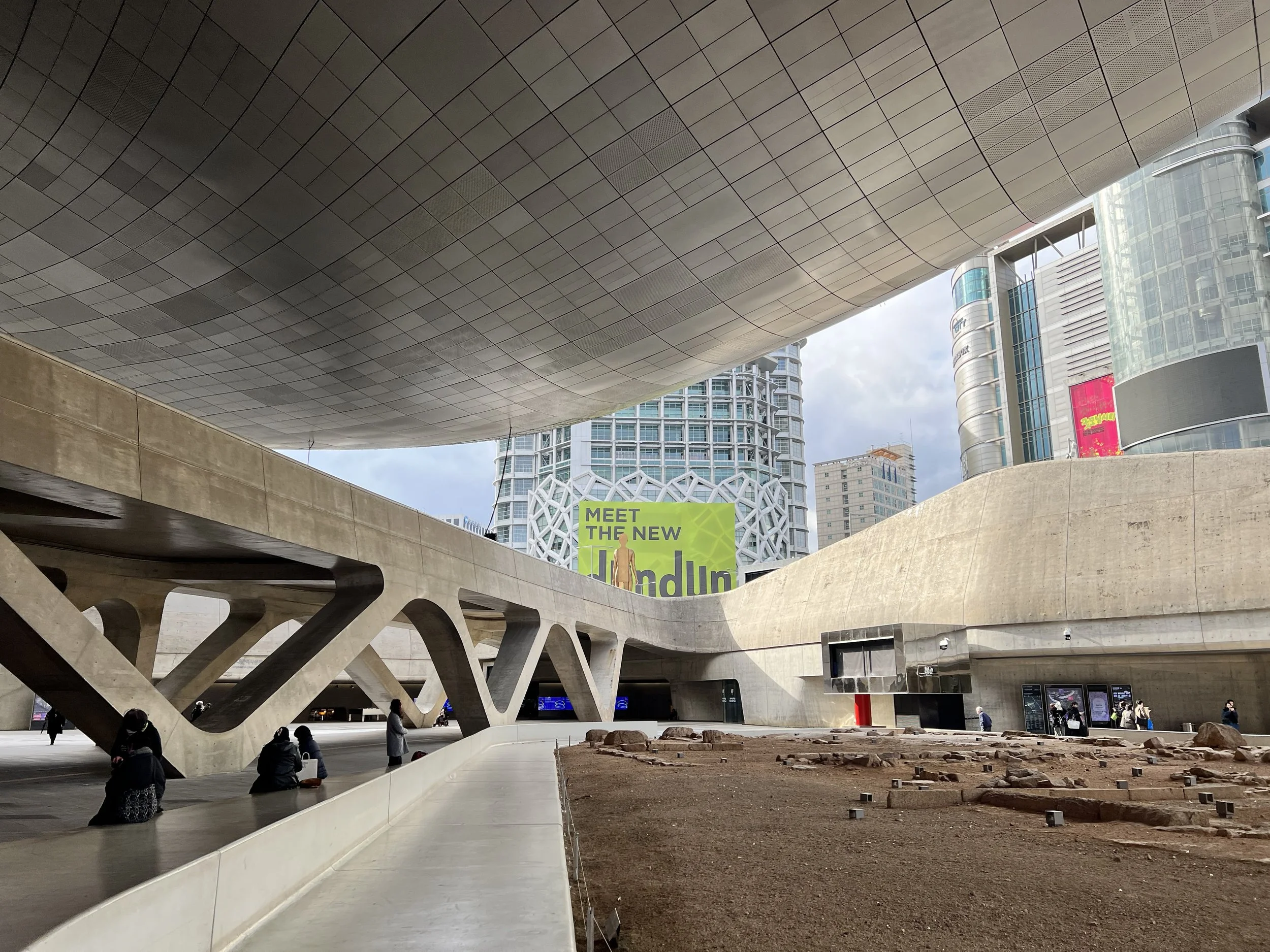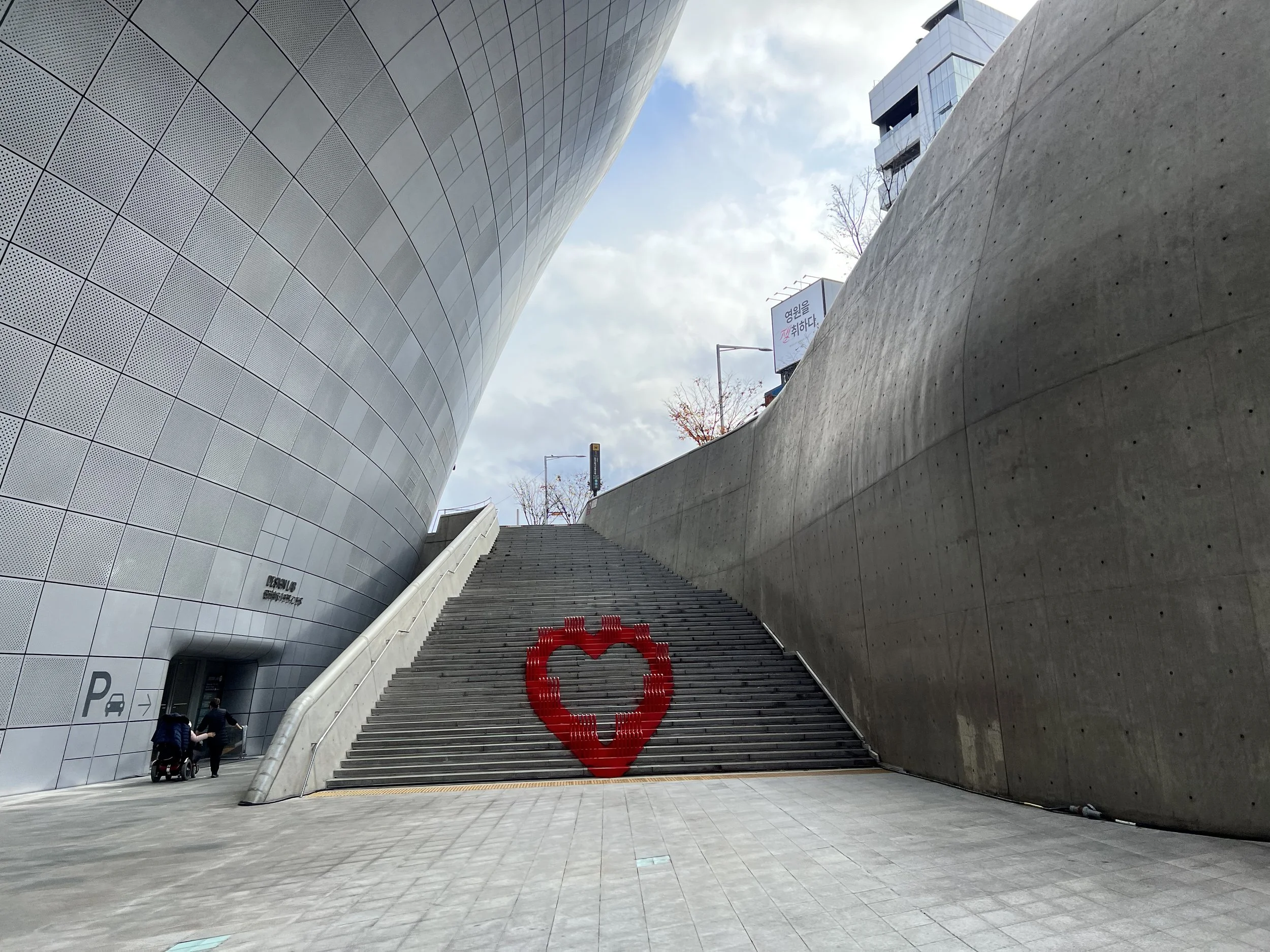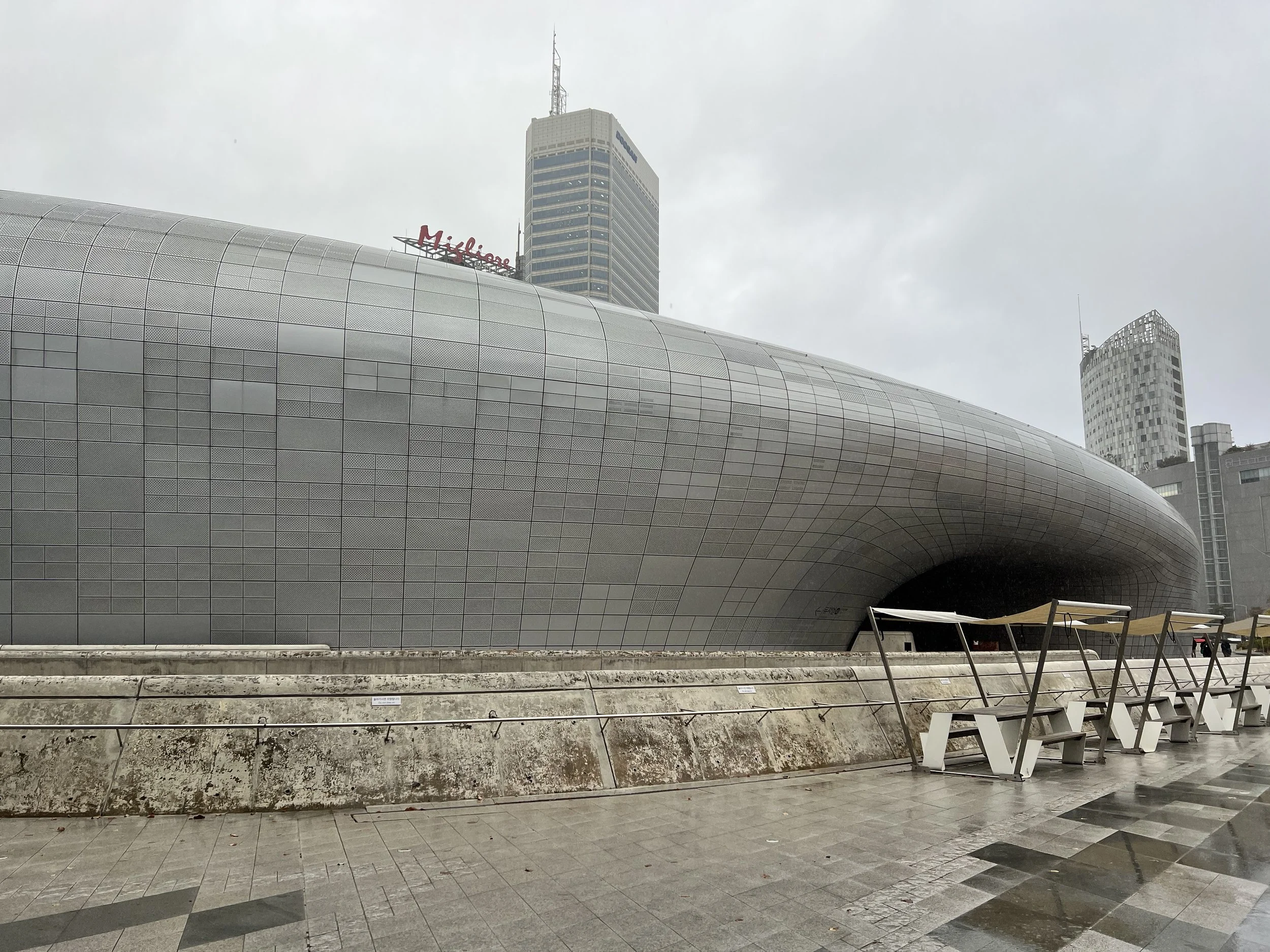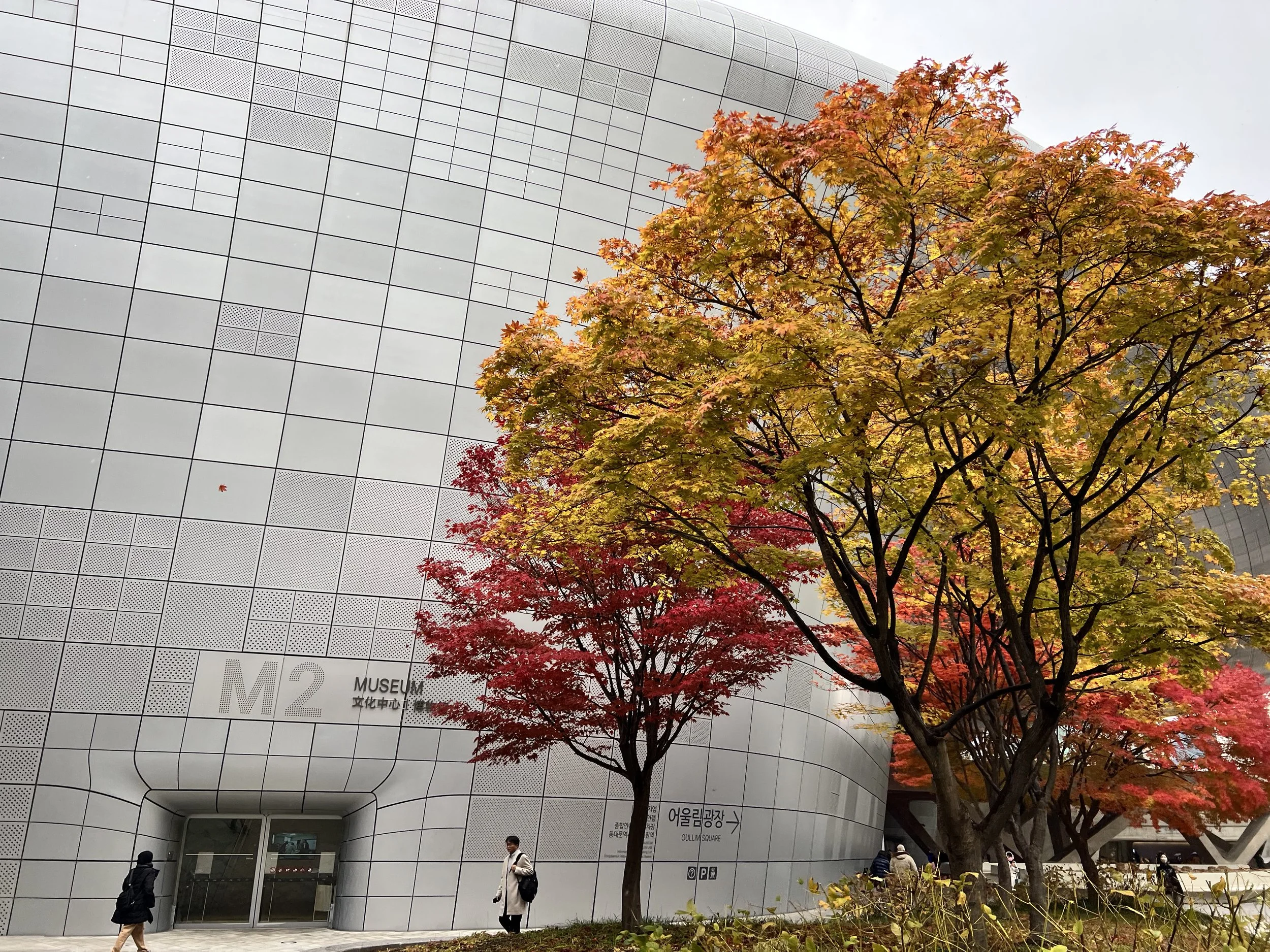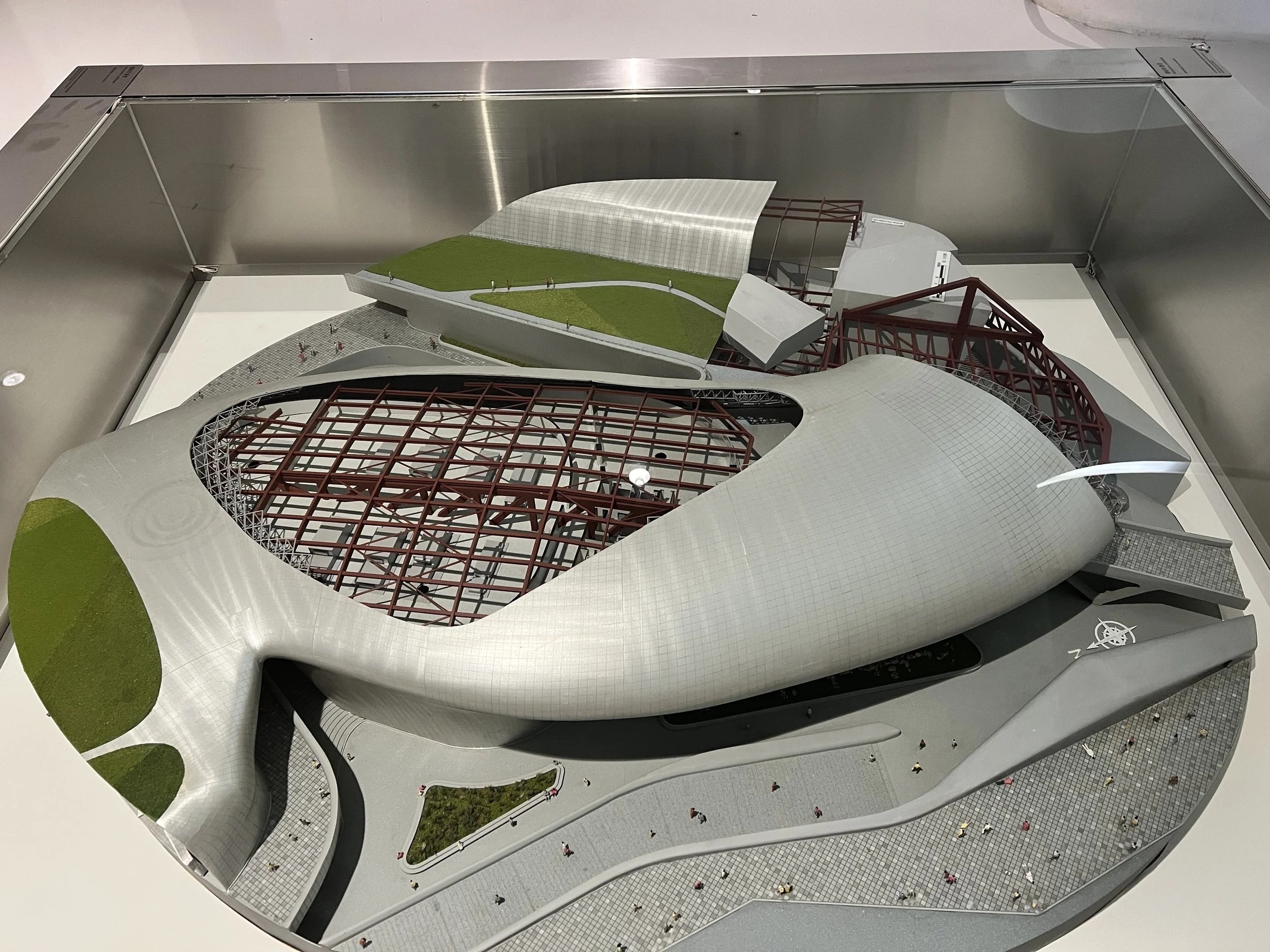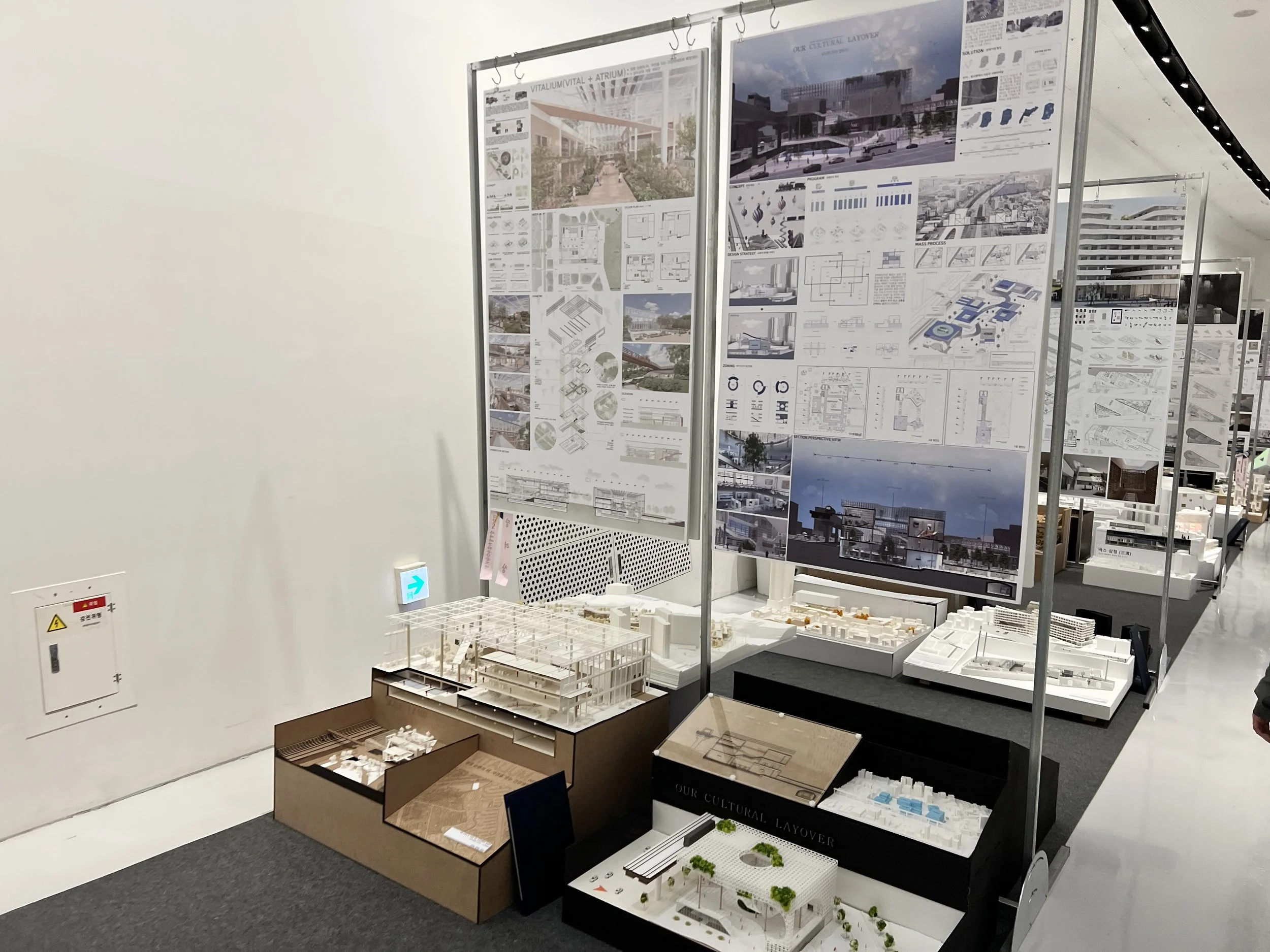Dongdaemun Design Plaza - Seoul, South Korea
Dongdaemun Design Plaza (DDP) came highly recommended by a friend, and after looking into it, I was immediately drawn to its futuristic architecture. Designed with sweeping curves, metallic surfaces, and a seamless flow of space, the building looked unlike anything else in Seoul. Since it was pouring rain that morning, visiting DDP felt like the perfect indoor adventure.
I took the subway from Seoul Station to Dongdaemun History & Culture Park Station, and as soon as I exited the station, I was right at the plaza. The area is more like a cultural complex than a single attraction—complete with galleries, exhibition halls, a history museum, design shops, cafés, restaurants, rooftop spaces, and an underground market.
My first stop was the information desk to sign up for the free English architecture tour, which is offered daily. With some time before it began, I wandered through the market area and the connected walkways. Even with the heavy rain outside, the interior was bustling. People browsed stalls, cafés were filling up quickly, and the energy of the space felt almost futuristic.
When it was time for the tour, I returned to the information desk. Our group was small—only three others—so the experience felt personal and relaxed. The guide explained the rules around photography and then led us through the vast interior, where we learned about the design philosophy behind the building.
DDP was created by Zaha Hadid, the celebrated British–Iraqi architect and the first woman to win the Pritzker Architecture Prize in 2004, often considered the “Nobel Prize of architecture.” Her signature style is immediately recognizable in the building’s flowing staircases, curved walls, and seamless corridors. During the tour, I learned how each exterior panel was numbered before installation to ensure it fit perfectly, how the building regulates temperature through its engineering and architectural design, and how the green roof system helps reduce heat while also managing rainwater. DDP also incorporates water recycling and energy-efficient lighting systems, making it both visually striking and environmentally forward-thinking.
One of my favourite features was the staircase design. It has all the hallmarks of Zaha Hadid’s work—fluid lines, raw concrete, and perforated metal panels that create a futuristic, almost sculptural look. I loved the top-down view of the curving stairwells, and walking through the winding interior corridors felt like exploring an endless maze. The tour also showcased an exhibition of architecture students’ models, which added a fun glimpse into creative design concepts.
Due to the weather, I didn’t get to visit the rooftop, but even without that, the tour gave me a deeper appreciation for how modern engineering, architecture, and sustainability were blended into one cohesive space. DDP played a major role in Seoul being named the World Design Capital in 2010, and after this visit, it’s easy to understand why—it truly embodies Seoul’s identity as a global creative hub.
Background
Completed in 2014, Dongdaemun Design Plaza (DDP) is one of Seoul’s most iconic architectural landmarks and a major centre for design, culture, and innovation. It was conceived as part of the city’s urban revitalization plan for the Dongdaemun area, replacing the former Dongdaemun Stadium with a space that emphasizes creativity and public engagement.
The building was designed by Dame Zaha Hadid, the British–Iraqi architect renowned for her fluid, futuristic forms. Hadid made history in 2004 when she became the first woman to receive the Pritzker Architecture Prize, the most prestigious award in the field. Her work on DDP exemplifies the organic, sculptural approach that defined her career.
DDP features over 45,000 uniquely shaped exterior panels, a massive green roof, and a layout designed to mimic natural topography. Its eco-conscious systems include built-in temperature regulation, rainwater management, and energy-efficient lighting. The plaza played a central role in Seoul being designated the World Design Capital in 2010 and remains a cultural and creative hub hosting global exhibitions, fashion events, design fairs, and community programming.
Getting There
Take the subway from Seoul Station directly to Dongdaemun History & Culture Park Station (Lines 2, 4, and 5). Once you exit the station, the plaza is immediately in front of you—DDP essentially wraps around the station area. From there, it’s easy to navigate between exhibition halls, galleries, cafés, and the market. If you’re interested in joining a tour, simply head to the information desk inside the main entrance.
Route Overview
Duration: 1 hr
Booking Info: Same-day registration for free English tours can be done in person at the main information desk, or booked online in advance. Architecture, history, and culture-themed tours are available.
Cost Breakdown
Train: Seoul Station → Dongdaemun History & Culture Park Station — ₩1,750
Food: ₩5,600
